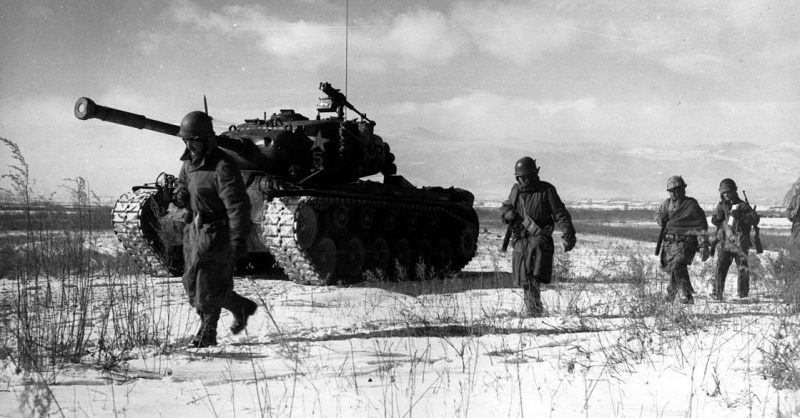Freddie L. Henson, of Klamath Falls, Oregon, was 19 when he was killed while serving his country in the Korean War. A corporal in the US Army, he was a member of Battery A, 57th Field Artillery Battalion, 7th Infantry Division. His remains have been identified and released to his family for burial.
In late 1950, around 2,500 US and 700 South Korean troops were combined into the 31st Regimental Combat Team (RCT). They were deployed east of the Chosin Reservoir in North Korea. There, they were overwhelmed by Chinese forces. They were down to only 385 men still fit for duty by December 5. As of December 6, Henson was listed as missing in action.
His name was not on any prisoner of war lists. No Americans reported sighting him in the prisoner of war camps after they were repatriated. With no evidence that Henson was still alive, the Army declared him deceased as of December 31, 1953.
The US Army Graves Registration Service made efforts to repatriate remains lying north of the Korean Demilitarized Zone after the war. However, complications in the administrative details between the United Nations Command and North Korea prevented this from occurring.
In September and October of 1954, under an agreement with North Korea, American remains were returned to the US in what was known as Operation Glory. Henson’s remains were not among those returned. He was declared non-recoverable as a result.
In 2004, during the 36th Joint Recovery Operation, teams worked on the eastern bank of the Chosin Reservoir in Changjin County, North Korea. They were working there based on information from a Korean witness. During their excavation, the team recovered the remains of at least five people, Defense POW/MIA Accounting Agency reported.
The DPAA and Armed Forces Medical Examiner System used mitochondrial (mtDNA) and Y-chromosome (Y-STR) DNA analysis to match a brother and a sister to Henson’s remains. In addition, circumstantial and anthropological evidence were used to match his remains to his records.
There are still 7,751 Americans unaccounted for from the Korean War. As technology advances, additional identifications are made from the remains returned to the US from North Korea or recovered by American teams.
